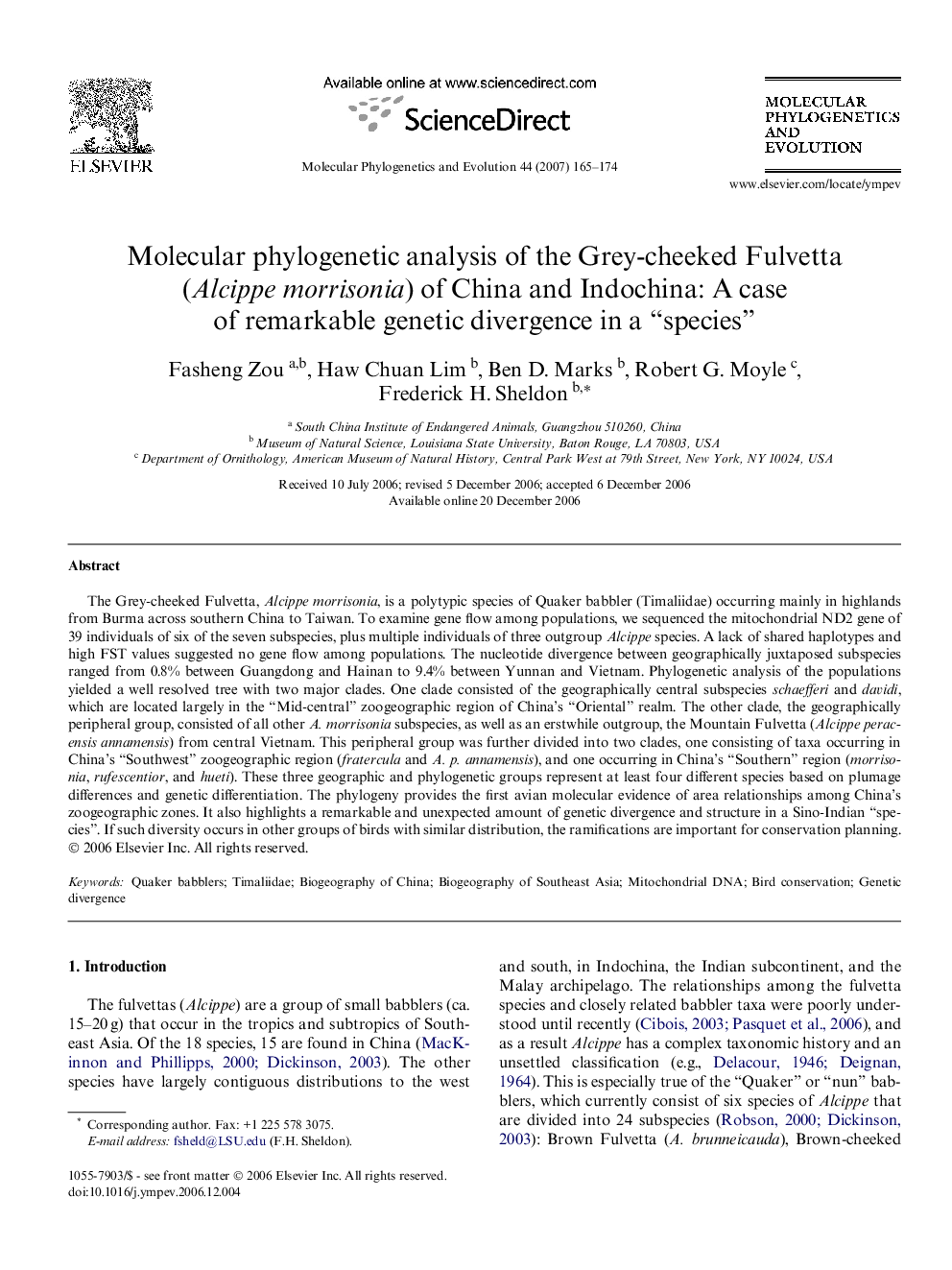| کد مقاله | کد نشریه | سال انتشار | مقاله انگلیسی | نسخه تمام متن |
|---|---|---|---|---|
| 2835705 | 1164351 | 2007 | 10 صفحه PDF | دانلود رایگان |

The Grey-cheeked Fulvetta, Alcippe morrisonia, is a polytypic species of Quaker babbler (Timaliidae) occurring mainly in highlands from Burma across southern China to Taiwan. To examine gene flow among populations, we sequenced the mitochondrial ND2 gene of 39 individuals of six of the seven subspecies, plus multiple individuals of three outgroup Alcippe species. A lack of shared haplotypes and high FST values suggested no gene flow among populations. The nucleotide divergence between geographically juxtaposed subspecies ranged from 0.8% between Guangdong and Hainan to 9.4% between Yunnan and Vietnam. Phylogenetic analysis of the populations yielded a well resolved tree with two major clades. One clade consisted of the geographically central subspecies schaefferi and davidi, which are located largely in the “Mid-central” zoogeographic region of China’s “Oriental” realm. The other clade, the geographically peripheral group, consisted of all other A. morrisonia subspecies, as well as an erstwhile outgroup, the Mountain Fulvetta (Alcippe peracensis annamensis) from central Vietnam. This peripheral group was further divided into two clades, one consisting of taxa occurring in China’s “Southwest” zoogeographic region (fratercula and A. p. annamensis), and one occurring in China’s “Southern” region (morrisonia, rufescentior, and hueti). These three geographic and phylogenetic groups represent at least four different species based on plumage differences and genetic differentiation. The phylogeny provides the first avian molecular evidence of area relationships among China’s zoogeographic zones. It also highlights a remarkable and unexpected amount of genetic divergence and structure in a Sino-Indian “species”. If such diversity occurs in other groups of birds with similar distribution, the ramifications are important for conservation planning.
Journal: Molecular Phylogenetics and Evolution - Volume 44, Issue 1, July 2007, Pages 165–174